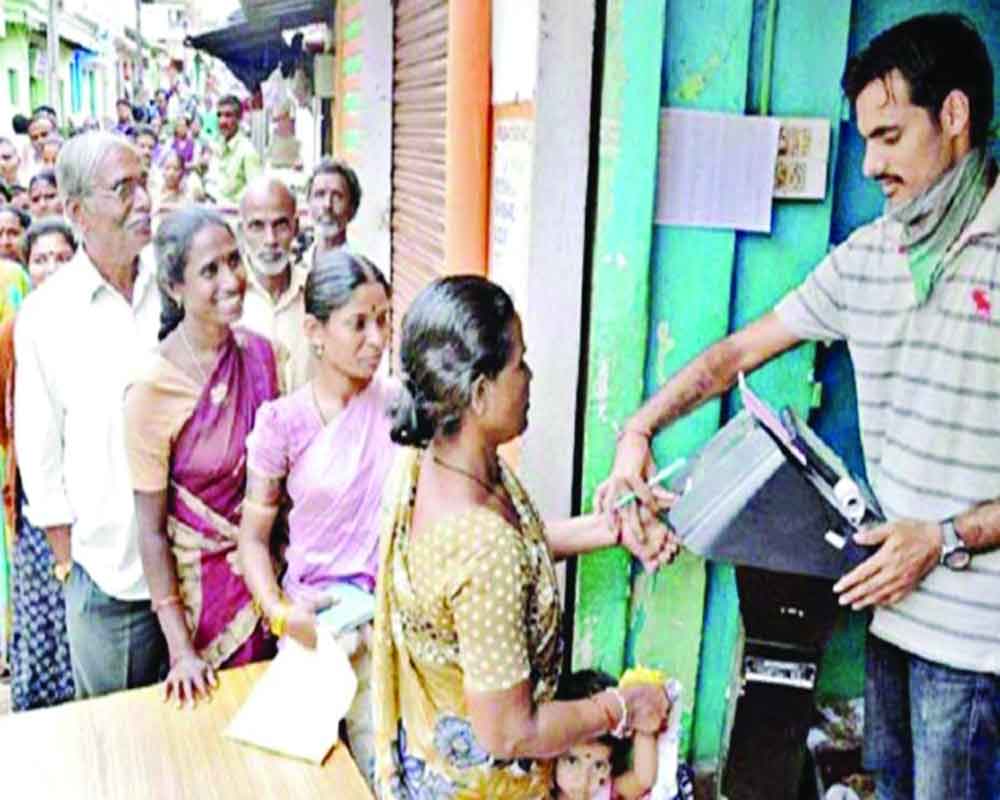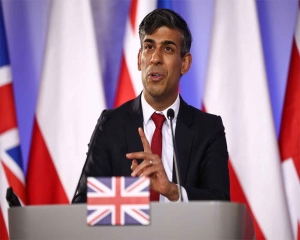While the nation’s GDP is poised to surge by 7.6 per cent in the current financial year, concerns loom large over the sluggish pace of private consumption
During the current financial year, the Indian economy is expected to register a growth of 7.6 per cent in real gross domestic product or GDP. Coming on top of growth of 9.1 per cent during 2021-22 and 7.2 per cent during 2022-23, India’s performance is spectacular. Emboldened by this trend and Modi’s commitment to pursue economic reforms with greater vigour during its third term, analysts are hoping for growth of above 7 per cent on a sustainable basis. But, there is a catch.
Private consumption which accounts for as much as 55 per cent of the Indian economy has acted as a major drag. For instance, during FY 2023-24, it is expected to grow by a meagre 3 per cent (even lower than 4.4 per cent as given in the first advance estimate). This is the slowest growth in private consumption since FY 2002-03 when growth was 2.9 per cent. It is impossible to sustain an overall GDP growth of 7-8 per cent in the years to come if the most important component (read: private consumption) is growing at less than half this rate.
What is private consumption?
Apart from essential consumption items such as food, shelter, clothing, education, health etc, it includes spending by people on a host of discretionary items such as consumer durables viz. ACs, refrigerators, washing machines, TVs, automobiles, mobiles and so on. The demand for these goods depends on the ‘purchasing power’ of the people at large which requires that at least all working-age persons (18 years to 60 years) have adequate incomes. This brings us to another stark reality namely the distribution of income and wealth.
Where does India stand?
According to a report ‘Time to Care’ by Oxfam that came ahead of the Annual Meeting of the World Economic Forum (WEF) held in January 2020 ‘India’s richest one per cent hold more than four times the wealth held by 953 million people who make up for the bottom 70 per cent of the population”. It also showed that there were a total of 63 Indian billionaires (billionaire is a term used to describe a person having wealth over US$ one billion) and their combined total wealth was higher than India’s Union Budget for the FY 2018-19.
Another Oxfam report, “Inequality Kills’’, released ahead of the WEF meeting held in early 2022, mentioned that the number of Indian billionaires grew to 102 by March 2020 and further to 142 in November 2021. During this period, their wealth increased from Rs 2300,000 crore to Rs 5300,000 crore. At the same time, the income of 84 per cent of households declined and the share of the bottom half of the population in national wealth was a mere six per cent.
Meanwhile, a report titled ‘Survival of the Richest’ released by Oxfam International at the 2023 annual meeting of the WEF in Davos, Switzerland, says that ‘the wealthiest one per cent of individuals in India possess over 40 per cent of the nation’s total wealth’. Juxtapose this with the bottom half of the population getting a mere six per cent of the nation’s wealth, we end up with glaring inequalities.
How does it impact demand?
Let us look at India’s population of around 140 crore and nominal GDP of about Rs 300,00,000 crore. Apply Oxfam percentages to these numbers.
The wealthiest one per cent or 1.4 crore individuals have 40 per cent of GDP or Rs 120,00,000 crore whereas a vast 50 per cent of the population or 70 crore individuals have a mere 6 per cent of GDP or Rs 18,00,000 crore. On per per-person basis, those in the wealthiest category have annual purchasing power (PP) of Rs 85 lakh each whereas others in the bottom 50 per cent have a PP of a mere Rs 25,000 each.
Such an income distribution pattern is far from conducive to boosting demand on a sustainable basis. There are inherent limits to how much a wealthy person can buy. On the other hand, if a good portion of the money with him is distributed among those who are not so blessed (read: the bottom 50 per cent), this would give a big boost to private consumption.
We hear loud voices from various quarters including from industries and businesses asking the Government to formulate policies, reduce taxes even give direct income support. But, there isn’t even a whisper of ‘why inequalities in income arise in the first place. An analysis of the financials of India’s largest companies—those comprising the BSE 500 index—gives us some clues.
The profits of corporations included in this index went up from Rs 480,000 crore during FY 2017-18 to more than Rs 1000,000 crore during FY 2021-22 - an increase of over 100 per cent, whereas their revenue growth was only 47 per cent during this period. This means that payments to factors of production other than the owners of capital (read: shareholders) such as to employees/workers, purchase of inputs, interest payments, etc., have been kept under a tight leash, resulting in a disproportionate boost to profits.
The aggregate dividend paid by these firms increased from Rs 176,000 crore during FY 2017-18 to Rs 302,000 crore during FY 2021-22, which is an increase of 72 per cent. In each of the last five years, they paid at least 30 per cent of aggregate net profit as dividends. Cumulatively, the companies distributed 34 per cent of profits as dividends. This is an unusually high payout ratio—even higher than 30 per cent paid by the world’s largest companies included in America’s S&P 500. Thus, the companies have done little to reinvest the profits for growth.
Whether profits, albeit extraordinary, to the company or high dividends to shareholders, they have been paid for or come at the cost of others. For instance, the Rs 1000,000 crore profits of firms in the BSE 500 index during FY 2021-22 came at the cost of undermining the purchasing power of millions of consumers. If even 50 per cent of this amount or Rs 500,000 crore had remained with the latter, aggregate demand would have gone up manifolds.
Likewise, look at the Rs 302,000 crore dividend paid to shareholders during FY 2021-22. An overwhelming share of this went to the promoters and other minority shareholders. If, instead of filling their coffers—the money that merely adds to their cash balances or is spent on a few discretionary/luxury items—more of it were to be distributed in higher salaries to their employees, particularly at the lower rung, imagine what it would do to demand.
Several businesses enjoy pricing power. For instance, those operating in metals such as copper and zinc, or in hydrocarbons like oil and gas, enjoy a natural monopoly. Leveraging this, they charge high prices, resulting in windfall gains for themselves. Enterprises in the chemical, petrochemicals, pharmaceutical and agrochemical sectors have hugely benefited from a protective policy environment.
Over 60 million small and medium enterprises (SMEs) also ape large enterprises when it comes to distributing the wealth generated. Their owners spend the least on payments to workers. To conclude, all businesses are structured to result in the concentration of income in the hands of their owners or those who wield power and influence. Instead of deflecting the ball to the Government, they need to bring about a fundamental change in the way they operate. They need to shed over zealousness for profits, charge less from consumers, distribute more to workers and pay more taxes.
(The writer is a policy analyst; views are personal)


























